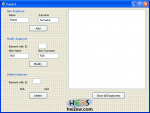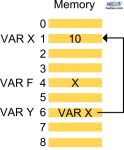
In previous two articles we talked about array management: copy by value and copy by pointer methods have been exposed to achieve same results but in different ways.
The former being direct and simply, the latter more powerful but danger (because of risks related to pointers).
If you get familiar with pointers you can understand their usefulness, so that they become sometimes necessary to ease some tasks; but we know their dangerousness!
Nothing stops us from building some construct, or data type thanks to which we can use pointers with a major security degree.
That's probably what people who writes TList types (for every programming language) thinks.
This is because the list is a so powerful and useful and commonly used data structure written for homogeneous elements.
Well... homogeneous! This surely recalls an array. And that's true!
